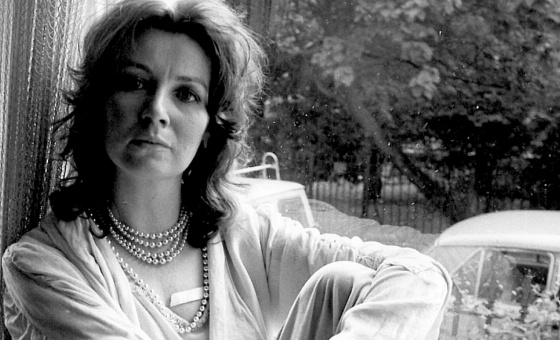This is the last article you can read this month
You can read more article this month
You can read more articles this month
Sorry your limit is up for this month
Reset on:
Please help support the Morning Star by subscribing here
In 1839 when Louis Daguerre introduced the invention of photography to an astonished assembly of artists and scientists, a leading painter declared: “From today painting is dead.” It survived, although in the 1970s conceptual artists declared painting irrelevant to an age saturated in lens-based imagery.
Marlene Dumas’s retrospective exhibition at Tate Modern proves them all wrong, yet it continues the uninterrupted dialogue between painting and photography initiated by Daguerre.
Dumas was born in 1953 to white Afrikaans-speaking farmers in Kuils-rivier, near Cape Town, five years after the establishment of apartheid. After a straight-laced education in a girls’ boarding school she studied fine art in Cape Town in the early 1970s. Her social and cultural horizons widened but there was little original art to be seen and she was taught the Western aesthetic, then dominated by art theory and conceptual art, from art books and journals.
She recalls that “making art at all was the question.” She left South Africa for the Netherlands in 1976 where she has lived ever since but that question remains central to her work.
Caught between a desire to portray the human figure and a concern to convey ideas in a visually complex age, Dumas soon rejected conceptualism’s antipathy to painting. By painting and drawing from lens-based images she questions the assumptions and stereotypes perpetuated by their representations of human beings.
Far from replicating her source images Dumas challenges their universal power by transforming them into visually seductive paintings through sensual touch, assured line and skilful composition and colour. Coupling accurate observation with expressionist distortion, her paintings have a visceral power rarely achieved by lens-based images.
In this show, a display of her early conceptual works is followed by the surprise of a roomful of larger than life-size portrait heads of disturbingly emotive power.
Their varied and vivid colour, sensuous marks and uncompromising simplifications of form initially entice, only to then chastise, shock or frighten.
Titles are important to her work. Genetic Longing depicts a young woman with enlarged features and a jealous expression whose hands, neck and forehead are red but whose lower face is black. Alluding to Hannah Arendt’s book, Evil is Banal portrays the malevolent gaze of a red head whose unearthly porcelain face and hand are partially scumbled with roughly applied charcoal paint, so challenging her smug racial identity.
Dumas’s works function on several levels. Their easily legible style and familiar subject matter make them appear widely accessible. A dizzying succession of people including herself, her friends and family intermingle with porn stars, celebrities, political heroes, martyrs and their oppressors and fictional and historical characters.
Much as in social and mass media, all human life is there. Black, white, mixed race, Asian, male, female, elderly, middle-aged, adolescent, children and babies return or avoid our gaze.
The initial effect of accessibility is deceptive. Visual seduction traps disturbing, repulsive or contradictory meanings. Rooted in the familiar, Dumas’s edgy interpretations destabilise our expectations. Complex layered references to history, art history, psychology, the bible, literature, film, pornography, politics and her personal life coexist.
A dead Christ faces a naked Japanese boy, while Naomi Campbell and Lady Di form a diptych titled Great Britain. Dumas’s young daughter stands naked with a demonic expression, blindfolded prisoners and a bare-breasted Pauline Lumumba mourns her assassinated husband in 1961.
A core preoccupation with the basic human themes of birth, sexuality and death emerges from her diverse subjects within which tragedy, oppression, racial and gender discrimination dominate.
Dumas often works in series. One room features her Magdalenas — celebrations of naked women as critical re-evaluations of the traditional Biblical association of childless, sexually active women with sinful temptresses.
The installation Reject confronts us with 40 unsettling drawings of human heads based on photographs of glamorous models juxtaposed with ones of the mentally ill, all of whose features are altered to create psychological or emotional dissonance. The recent series, Great Men of 2014, consists of drawings of famous homosexuals such as Alan Turing and Oscar Wilde with handwritten accounts of their victimisation.
Some overtly “political” subjects such as Israeli oppression of Palestinians convey a humanitarian concern for social justice. But a hesitancy towards ideological commitment invites liberal, hand-wringing responses rather than incitements to action.
Ambivalence, complexity and contradiction are Dumas’s overriding message and this is emphasised by her statements in the lively exhibition catalogue and gnomic quotations in each room. “My art is situated between the pornographic tendency to reveal everything and the erotic inclination to hide what it’s all about,” as one explains.
Dumas’s enduring contribution lies in her interrogation of the mass media’s mediation of our existence. Her paintings and drawings spur a critical response to its glossy superficiality and assert the continuing validity of tactile, handmade communication in a world drowning in impersonal screen culture.
Marlene Dumas: The Image as Burden, runs at Tate Modern, Bankside, London SE1 until May 10.





